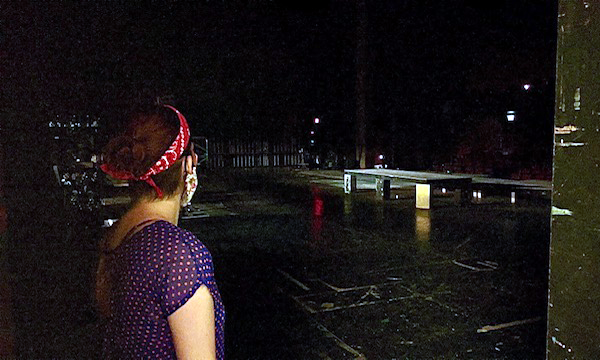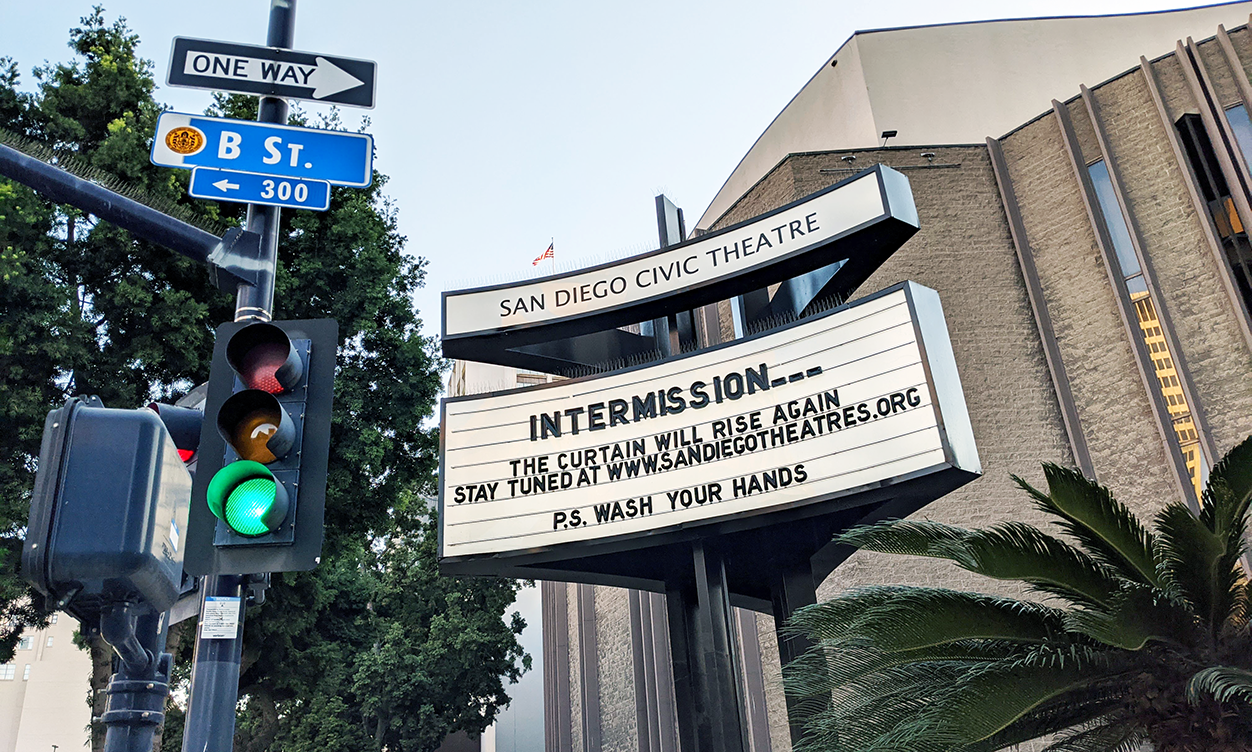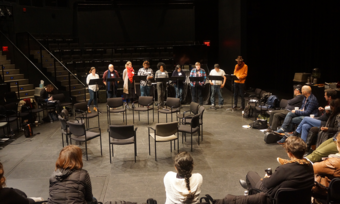In the long run, the people most likely to ride out a wave of layoffs and a lack of jobs to eventually gain or regain full-time employment will be those with outside financial support. It’s worth considering who these people are. In the United States, intergenerational wealth is tied to whiteness; Black and Indigenous families have faced systemic racist policy that has prevented the accumulation of wealth, from job discrimination to redlining. On average, white families’ collected income is ten times higher than Black families, and white families are more likely than families of any other racial group to have dispersed assets that form a more secure safety net, a benefit in a precarious industry to begin with and essential in a crisis.
In fact, this wealth disparity, as well as general racism, is likely one of the reasons the arts field is already less racially diverse than the general workforce. A 2018 study found non-Latinx white people made of 72.6 percent of arts workers in the United States, compared to 62 percent of the overall workforce. Additionally, disabled workers who require health insurance or expensive medication, and LGBTQ+ workers without family support, are more vulnerable to financial hardships. We don’t have statistical analysis on the loss of workers from 2020 yet, but it is reasonable to predict that the loss will be tied to class and thus to race, ability, and even sexuality. Of course, theatre is just one microcosm of the injustices and systemic failures we see all around us.
Loss of diversity matters on a personal and artistic level. If the class and intersecting demographic makeup of the industry impact the stories theatres tell, it’s possible we have more boring white family dramas centered around Grandpa’s will in our future as a generation of diverse theatre artists can’t find work and turn elsewhere. This is tragic both for the tired tropes (I’m bored of hearing about Grandpa’s will) but more significantly because of what these stories suggest about the industry’s diversity, sustainability, and future audiences.
Valuing labor extends beyond paying artists—it also means creating an environment where artists can work more than one job sustainably and feel comfortable saying “no” to additional requests of their time and energy.
A Few Suggestions
What can be done to support young theatre workers and maintain diversity in our industry? Talking to other recent graduates and young professionals, I have a few suggestions, large and small, for arts advocates, industry leaders, and interested readers. Here goes.
1. Prioritize Pay Increases for Entry-Level and Low-Tier Workers
The most obvious solution, those in positions of power should take a hard look at their budgets and allocate more to entry-level positions. This may feel premature, but the havoc wrought by the pandemic also gives managers the chance to consider budgeting shifts while rebuilding now and in planning for the future.
In a moment of interlocking crises, the ideological commitments many theatre companies made in the wake of George Floyd’s murder and the #WeSeeYouWAT movement will mean little if not backed by material support for marginalized and entry-level artists. This means more than commissioning established playwrights or diversifying boards: it means paying lighting technicians, dressers, and, yes, interns. #WeSeeYouWAT specifically ties fair compensation to low-tier workers to their project for racial justice, demanding that the highest paid staff makes no more than ten times the lowest paid staff’s salary. Transparent and fair compensation enables diversity by giving new workers without financial support a chance coming out of a pandemic.
2. Get Involved in Arts Advocacy
It’s not unreasonable to ask where this money will come from, not as a politically snide hypothetical but as a real question. Certainly, some artistic and managing directors at large theatres have bloated salaries, but most operating budgets are already tight. Several people I interviewed, including Ella Mock, an actor and intimacy choreographer, talked about what government support would mean for young professionals working at entry-level rates and who are not always unionized.
Citing governments with more theatre funding, including Germany and England, Ella acknowledged that, in the United States, there is only so much funding available from private donors and non-profits, and that government support is essential. “It’s that kind of sweeping systemic change that’s really necessary,” they said. “I see so much put on individual responsibility. I’m sick of being told I’m the one who has to give—who has to give free labor, give money—in order to keep this art alive. If that’s the case, then who’s keeping me alive?”
We do need more funding for the arts, in part for theatre to be a viable career choice for those from working-class backgrounds, theatre artists of color, and disabled theatre artists. We need funding in stimulus money now, with long-term plans to increase funding permanently. Civic engagement can prompt some of this change, including voting, writing letters, marching, lobbying, and pressuring local, state, and federal governing bodies. All this feels a little more possible now with the change in executive administration. (And in an article about career shifts, I’d be remiss not to mention that I would love to vote for progressive candidates with theatre backgrounds.)
3. Invest Locally
There is a tremendous opportunity as theatres rebuild to recommit to serving local populations. I’m not the first to say now is an excellent time for theatres to become more community centered, and I hope I’m not the last. Investing locally will have an outsized impact on young workers. Without savings or significant professional networks, many of the new graduates and young professionals I talked to had moved during the pandemic, often in with parents and sometimes with partners, leaving urban centers for smaller cities or towns.
This dispersion of young and diverse artists away from elite arts centers could reinvigorate local communities but needs to be backed by funding. Arts policymakers and advocates at the national and state levels should increase funding to small cities, towns, and rural arts efforts, and regional theatre companies that hire designers and actors from far-off urban centers should look locally first as they begin to make plans for a post-vaccine world.
In the understatement of 2020, it’s a rough time for all theatremakers, young and old, new and established.
4. Accommodate Part-Time Workers
As theatre workers have picked up jobs elsewhere, and given that reopening theatres will be a slow process, professional theatres need to find ways to accommodate part-time schedules and honor labor boundaries. Some local and community theatres can provide models for how to work with a variety of timetables. Too often, though, even hobby theatres don’t actively encourage open communication on needs and boundaries.
Valuing labor extends beyond paying artists—it also means creating an environment where artists can work more than one job sustainably and feel comfortable saying “no” to additional requests of their time and energy. Many of these additional requests fall disproportionately on theatre workers of color expected to do equity, diversity, and inclusion (EDI) work for free. Yes, pay EDI workers for this labor, but also cultivate an environment where workers can say “no” to additional demands without fear of retribution.
5. Change the Narratives of Success
This is the most intangible of my suggestions, but also the one I heard repeated again and again in my interviews. We need to end the stigma around finding work outside of the arts sector. Jordan Nicholes, a friend who left the grind of professional acting behind for a career in sales, told me that, he felt like his fellow artists were always keeping tabs on each other, and “if they don’t make a living or pay their bills doing this art—acting, for example—then they’re a failure.” He laughed at the absurdity of it, “Oh man, that’s a losing game though! Because you know nine out of ten are not going to pay all their bills with just acting, and zero out of ten are going to do that during COVID.”













Comments
The article is just the start of the conversation—we want to know what you think about this subject, too! HowlRound is a space for knowledge-sharing, and we welcome spirited, thoughtful, and on-topic dialogue. Find our full comments policy here
This is the most direct exploration I've seen of how the pandemic has affected American theatre and also the American arts in general. Covid-19 in this country has not only spread unexpected tragedy, it has accentuated (severely accentuated) a multitude of systemic flaws already in action. The author Kristin Perkins has with empathy and masterful language targeted some of these flaws within our theatre community, and the future steps she suggests will remain essential well after our curtains rise again.
Thanks so much Christopher! Both for your compliment and for your engagement with the piece. I agree, the pandemic has only accentuated problems that were deeply ingrained in our systems for a long time from the obvious (health care) to the more opaque (devalued arts labor). Isn't it flabbergasting how interconnected this world is?